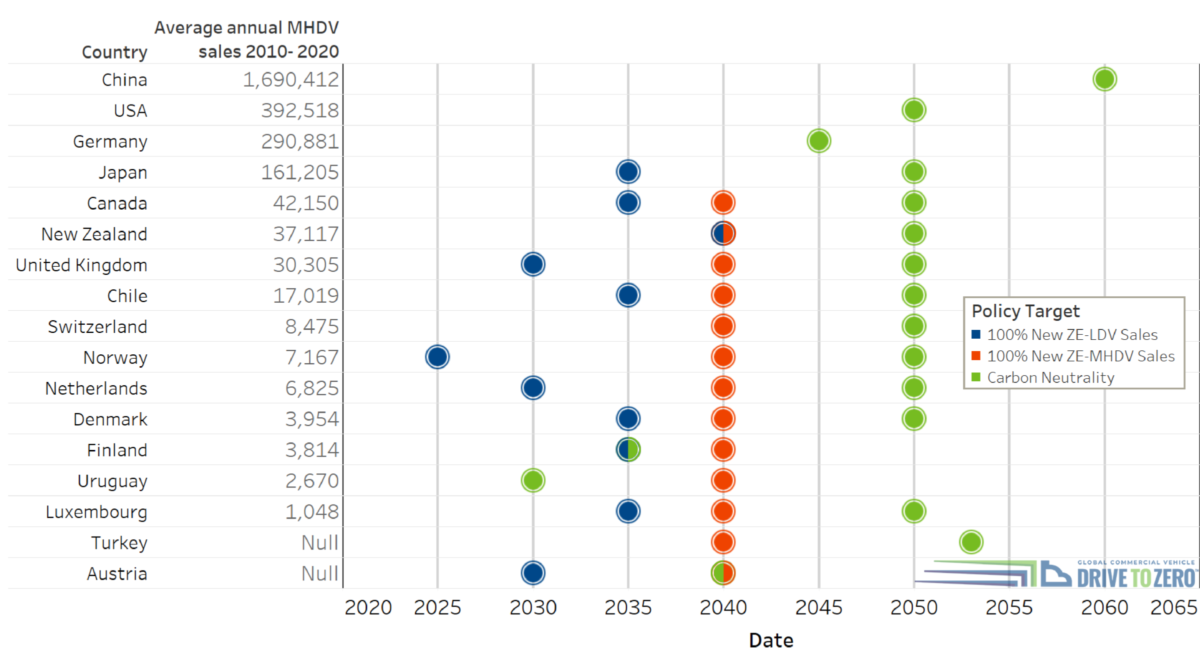This briefing highlights the status of targets and ambitions set forth by leading nations to reduce the impact of transportation activity on the environment and public health. Building a supportive zero-emission vehicle (ZEV) policy ecosystem is critical to achieving accelerated action and more rapid adoption of innovative, clean technologies by fleets. Setting clear and ambitious targets is a foundational step in the transition.
In a historic announcement at the 26th Conference of Parties (COP26) 15 leading nations pledged their support to a Global Memorandum of Understanding (MOU) that establishes zero-emission medium- and heavy-duty vehicle (ZE-MHDV) sales targets. For nations that adopt these targets, they will enable reaching the goal of net-zero carbon emissions by 2050.
The broad international support for this MOU marks an inflection point. The time for governments and other key stakeholders to dwell on the issue of technology readiness has passed. With numerous examples of successful deployments and operations, clean trucks and buses across all vocations are functionally ready to tackle a wide variety of duty cycles and ranges.
The figure below outlines the high-level targets currently established by each country.
Figure 1. Countries’ policy targets for on-road vehicles

Note: Countries arranged in descending order by average annual MHDV sales from 2010 – 2020; Data unavailable for Turkey and Austria; LDV = light-duty vehicles; MHDV = Medium- and heavy-duty vehicles.
